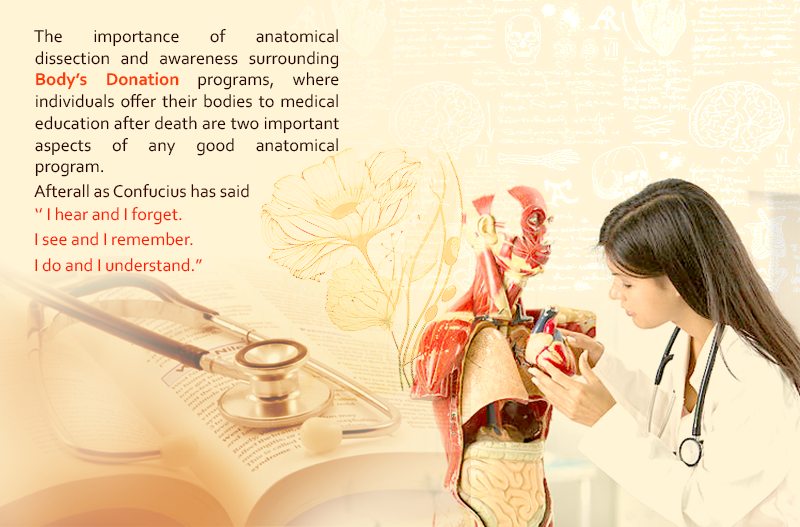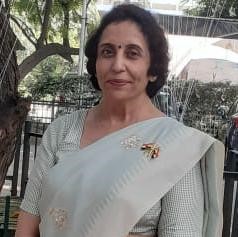Body Donation & the Success of Medical Education

Dr. Renu Chauhan
Director, Professor and Head
Department of Anatomy
UCMS and GTB Hospital,
Dilshad garden, Delhi - 95
“I profess to learn and to teach anatomy not from books but from dissection, not from the tenets of philosopher but from the fabric of nature. “ : William Harvey
The word “anatomy” is derived from the Greek word “ana,” and “tome,” which means “up” and “a cutting.” The human body is a wonderous structure; billions of cells coming together to form tissues and organs that each have their unique function. The curiosity surrounding the human body emerged as early as 335 BC. Herophilus, a Greek physician is often regarded as one of the earliest anatomists and amongst the first to perform scientific dissections on the human cadavers. The history of anatomical dissection has been complex; marred with ethical and religious conflicts.
The human anatomy can simply be defined as the study of the structures of the human body. Dissection fulfils the purpose of understanding the human anatomy by seeing the tissues, organs, vessels and nerves as they are positioned in the human body relative to each other. Dissection is an integral part of learning about the human anatomy. Anatomical dissection involves the careful cutting of an embalmed cadaver for the purposes of teaching and learning. Anatomy forms the foundation of medical, physiotherapy, nursing and dental teaching curriculum. And the dissection hall remains the place where medical students gather in groups for exploring the nuances of the human body. It is within the confines of the dissection hall that the qualities of empathetic and humane treatment of the human body are inculcated among students. The group learning encourages team playing, capacity building, while helping medical students acquire academic skills. Medical dissection positively engages the cognitive faculties of the brain and helps the students ‘in learning by doing. Medical profession involves not only the memorization of facts but also a training in medical and professional ethics. Human dissection teaches students the careful handling of the cadaver, how to respectfully proceed with cutting it open and preserving it for the purpose of learning. It indirectly teaches the students about the limitations of the human body, limitations of the medical profession, and value of medical ethics. As they learn about the structure of the human organs and their blood and nerve supply, they also learn the value of life and death cycle. The ultimate test of medicine lies in balancing the tightrope of respecting the boundaries of the human body, while using the human cadaver to enhance medical training. The anatomical dissection is indeed an art of treating the human body respectfully and compassionately. In truth, the practicality of the oath of medicine takes birth on the dissection table.
From an academic standpoint, human anatomy is a tough subject to master. And its’ in-depth understanding and knowledge is key to master both medical and surgical skills. Human dissection can be divided into gross anatomy which involves the study of organs or body parts which are visible to the naked eye, and microscopic/histopathological where cells or tissues which are microstructures from which organs are made are studied under the microscope. Logistical issues would be maintaining cadaver embalming and preservation in the anatomy department. More importantly, even with recent advances in technologies like 3 dimensional videos, and artificial intelligence the importance of actual human dissection is indispensable and cannot be overstated. The success of any good medical education program lies in teaching students about the foundational aspects of human anatomy, physiology and biochemistry. The importance of anatomical dissection and awareness surrounding body’s donation programs, where individuals offer their bodies to medical education after death are two important aspects of any good anatomical program. Afterall as Confucius has said ‘’ I hear and I forget. I see and I remember. I do and I understand.”
Awareness programmes about organ and body donation must be an integral part of our school and college education and should reflect in our social, cultural and political ethos to make it a successful National movement.
Renu Chauhan


 Dr. Renu Chauhan
Dr. Renu Chauhan